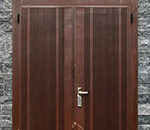Unlike most photographers, Jason Page creates his images in complete darkness. After experimenting with long exposures of the moon reflecting over the sea, he became interested capturing movement within his nightscapes. After discovering light painting, Page began to work with creating figures and objects using nothing more than strokes of light. In the following tutorial, he explains his process as well as tips on perfecting the strategy:
You will need:
- Flashlight with Opaque Light Writer
- Flashlight with color filter of your choice
How to Light Paint a Person
- Find an environment with little to no light. Have the model wear dark, tight fitting clothing.
- Set the shutter speed on your camera to BULB mode.
- Pick a position for your model that’s easy to maintain. Minimizing the amount of movement in your subject will create a clearer, more cohesive figure in camera.
- Beginning from the bottom of one leg, trace over the model’s limb with the light writer by quickly alternating from one side of each limb to the other, gradually working upward toward the thigh. Keep the flashlight close to the body to add definition to the curves of the figure as much as possible.
- Once you’ve reached the waist, work back down the leg that hasn’t been illuminated. After reaching the foot, turn the flashlight equipped with the light writer off. Quickly bring the flashlight back up to waist. Turn the flashlight back on and work up to across the torso and arm.
- Use the same technique of turning off the flashlight when jumping to a new part of the body that has not yet been traced. When all parts of the body have been traced, go over areas that you’d like to completely mask out by light two or three times more.
- When you feel that your figure has been properly outlined in light, have them move out of the scene. Use a flashlight equipped with a color filter to highlight any surroundings in the environment. Use a filter over the flashlight to block out any unintentional light streaks and implement more control in lighting.
- Turn off all lights and release the shutter. Your composition is complete!
Using Page’s technique, no post processing is necessary to attain incredible results. After some practice tracing physical figures and objects, it’s even possible to move on and “create” new features inside of your image with streaks of light. Your mind and equipment’s battery life are the only real inhibitors that stand between you and a vibrant, surreal image—even in the dead of night.
Like This Article?
Don't Miss The Next One!
Join over 100,000 photographers of all experience levels who receive our free photography tips and articles to stay current:







Leave a Reply